Final project - MINI SALT FACTORY¶
Slide
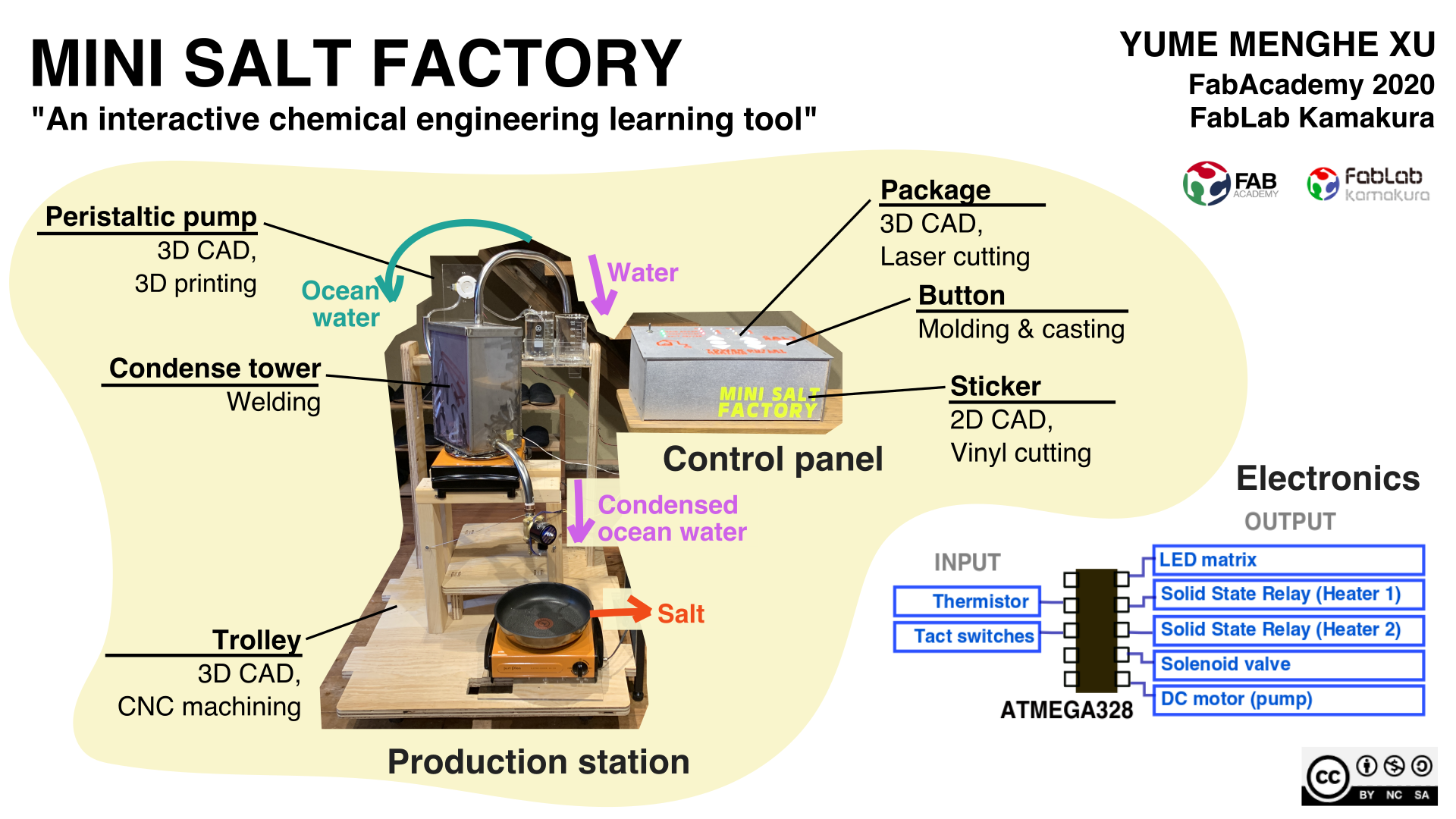
Video
Here is a bonus video I made for friends. It is longer but explains everything in a more detailed manner.
What will it do?¶
It distillates ocean water and makes pure water & salt.
-
the distillation tower condense ocean water (approx. 5% salinity) to pure water and condensed salt water (approx. 15% salinity).
-
the condensed water is heated in a pan to make salt.
With the control panel, user can change the temperature of distillation tower heating, and reaction time to see how that effects the amount of salt produced.
It serves as an interactive learning tool on chemical engineering (mostly for children but I do think adults can learn from it too) about
-
how chemical plants look like in general
-
what the concept of “continuous process” is
-
what control parameters are involved when designing/running a chemical plant and how they affect the production
Target age: 9+ (younger age can also learn from watching demo)
Scale: approximately 1.6 cubic meter.
Why make it?¶
When talking about chemistry education, people tend to focus on reactions inside a lab,
while overlooking the manufacturing/engineering aspect.

Chemistry in general can be totally different when coming to large scale production.
Reactions/productions designed for a beaker can easily fail in a factory.
Therefore, I made MINI SALT FACTORY that focuses on the production system/engineering aspect of chemistry.
Through interactions with MINI SALT FACTORY, learners can learn about:
- the basics of chemical engineering,
- the concept of a “continuous” process
- the concept of systematic thinking (through experiencing how changing even just 1 control parameter affects the whole system)
Who has done what beforehand?¶
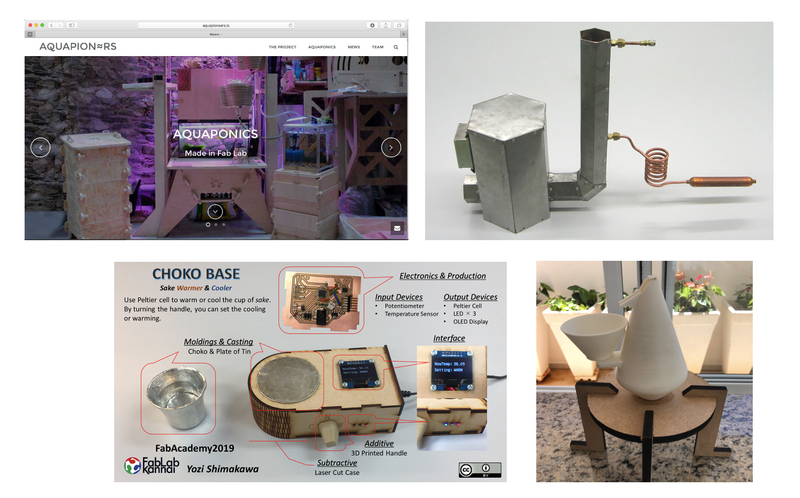
- (To learn about heat control) Heat & Electricity generator using wood (Meier Ferdinand, FA2013) (page)
- (To learn about flow control and display) Aquaponics system (Gillaume Teyssie, FA2016) (page)
- Essential oil extractor (Laura Massaglia, FA2018) (page)
- (To learn about control parametersand display, molding a pot/pan) Sake heater (Yozi Shimakawa, FA2019) (page)
What did I design? & What parts and systems were made?¶

Input and output devices such as thermistor, LED, tactile switch, SSR, heater, DC motor, and solenoid valve were purchased.
All of fabrication and integration was designed and implemented by me with the assistance of FabLab Kamakura instructors.
Rico helped me design & fabricate the stool under the Condenser tower, and the vinyl cut stickers on the control panel.
The integration of electronics including how to place the LEDs and tactile switch, and the wiring was done under the advice of Yamamoto-san.
What materials and components were used?¶
-
Condenser tower:
- body welded with stainless steel
- heat sensing using a thermistor
- heated with an electric stove controled using solid state relay (SSR)
-
Feed (for Condenser tower):
- 3D printed peristaltic pump with silicon tube
- operated with DC motor
- laser cut acrylic frame
-
Outlet (for Condenser tower):
- Solenoid valve
-
Heating pan (for salt production from condensed salt water):
- heated with an electric stove controled using solid state relay (SSR)
-
Control panel:
- structure made with laser cut MDF
- buttons made using tactile switch combined with switch cap made from molding & casting
- decoration using vinyl cut stickers
- LEDs as indicators
-
Trolley:
- CNC milled plywood
-
Electronics:
- CNC milled control board
Where will come from? & How much will they cost?¶
Bills of materials¶

What processes were used?¶
-
Welding
- Condenser tower body
-
Additive fabrication processes:
- 3D printed peristaltic pump
-
Subtractive fabrication processes:
- CNC machine milled circuit board
- Laser cut MDF for control panel
- Laser cut plywood for trolley
- Vinyl cut sticker
- Wax milling of mold
-
Molding & Casting
- Button caps for control panel
-
Electronics design and production, embedded microcontroller interfacing and programming
- Main board produced using CNC machine
- Electronics on control board wired
-
System integration and packaging
- Wiring and assembling of control panel
- Wiring of electrical connections to chemical system components” (solenoid, thermistor, etc.)
What questions were answered?¶
In a more general manner:
-
Does is make salt & pure water properly?
-
Can it be a continuous process?
-
Is the UI/UX children-friendly?
In a more specific manner:
-
How do I make a peristaltic pump that works?
-
How do I weld a Condenser tower that does not leak?
-
How do I heat the tower and control it under a centain temperature?
-
How do I control the outlet of the tower?
-
If I want to make big buttons for more interesting UX, how do I make them?
-
How do I implement the electonics of the control panel (tact switches and LEDs)?
What worked? What didn’t?¶
On a more general manner:
-
Salt & pure water was generated.
-
Large buttons and shiny LEDs were used in the control panel, which ensures a more interesting experience for children. Maybe it can be more simplified but I’m happy with the result.
-
I wanted to make salinity sensor to test the salinity of condensed ocean water coming out. But that was triaged.
-
It works as a continuous process, but each cycle takes too long(it takes around 15 minutes to make 1 batch of salt). In chemical engineering, the amount of inlet particles need to be the same as the outlet to make sure a continuous process. Therefore, to make sure this process is continuous, the amount of ocean water inlet should be the same as the sum of pure water and condensed ocean water coming out. Ocean water inlet can be controlled by DC motor’s speed and time span turned on. Pure water outlet can be controlled by the heating temperature and time of Condenser tower. Condensed ocean water outlet can be controlled by the solenoid valve’s time span turned on. I would love to figure out the relationship of those in equations and implement that into the program.
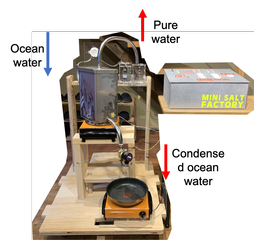
I tried a program to simulate chemical engineering processes. I got familiar with the basic functions, so in the future I can use it to actually simulate the process, and figure out a relationship among the inlet and outlet in this system.
DWSIM - a chemical process simulator¶
I downloaded DWSIM and tried setting up the basics for the simulation.
DWSIM is a chemical process simulator. I used Aspen Plus for a bit when I was in school. However, it is very expensive, and luckily I found this open source software as a substitute.
I followed this tutorial.
Started a new simulation when I started the application. Right after starting, it asks some questions about the basic settings. (You can always do them later.)
Step 1 - Add compound. I chose NaCl and H2O.
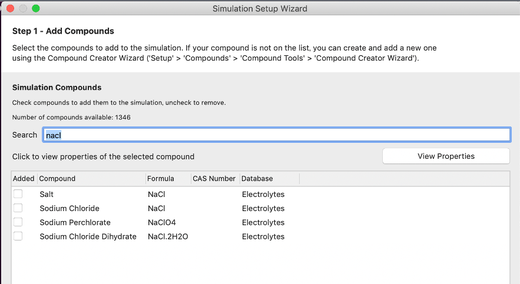
Step 2 - Process Model Details. Water is polar chemicals so I guess…?
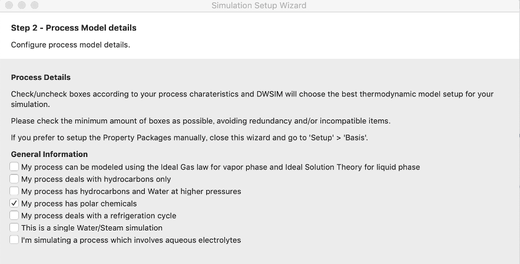
Step 3 - Other settings. I went with the default.
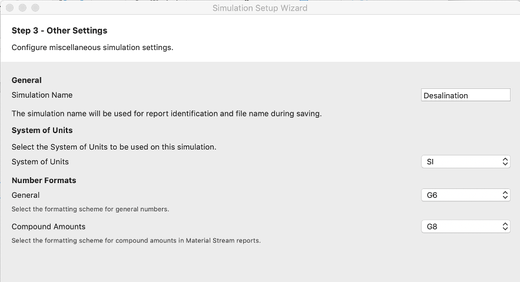
Now I have my simulation page.

Setup > Compounds and you will see the compounds you selected before. You can also edit the list.
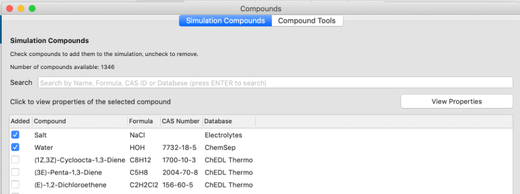
Setup > Basics A tutorial suggests me to add Peng-Robinson into my property packages (NRTL was there at the beginning), and Nested loops (VLE) in my flash algorithms. I don’t understand why though…

Right click anywhere > add new object > material stream.
Right click anywhere > Add new object > Gas-Liquid Separator.
In the same manner, I added more material streams, some energy streams, a valve, and an adiabatic compressor.
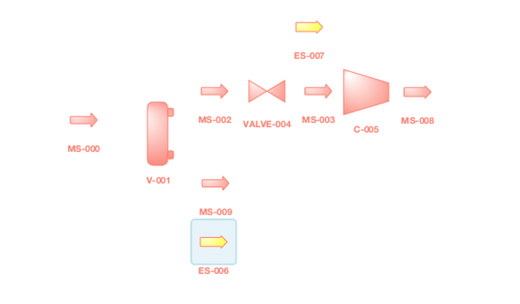
Right click on the gas-liquid separator > Edit to open the menu to edit streams.
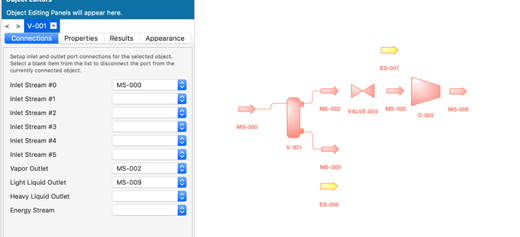
I edited every objects, including the energy stream (ES-006 was not necessary)
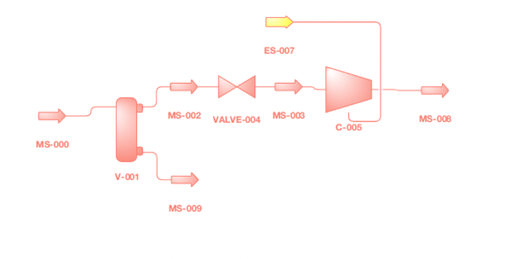
Continuing with the “What worked? What didn’t?” question.
In a more specific manner:
-
My peristaltic pump worked during testing, but didn’t pump liquid properly when integrated into the system/
-
I successfully welded a Condenser tower that does not leak.
-
I was able to heat the tower and control it under a centain temperature using a thermistor as temp. sensor, and an SSR.
-
I was able to control the outlet of the tower using solenoid valve.
-
I was able to mold and cast button caps that fit on tactile switches for the control panel.
-
I wired the tact switches and LEDs by soldering them onto nichrome wire on the other side of control panel.
How was it evaluated?¶
-
I tasted to make sure salt and pure water was produced.
-
The buttons and the LEDs on the control panel worked as the algorithm planned.
-
Later on, I will hold workshops for children to see if they actually like it.